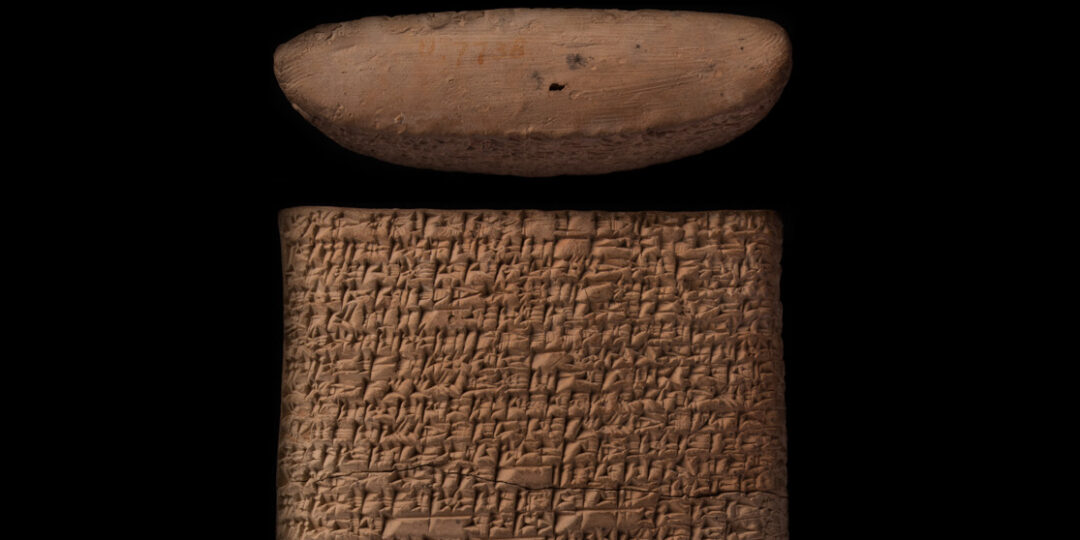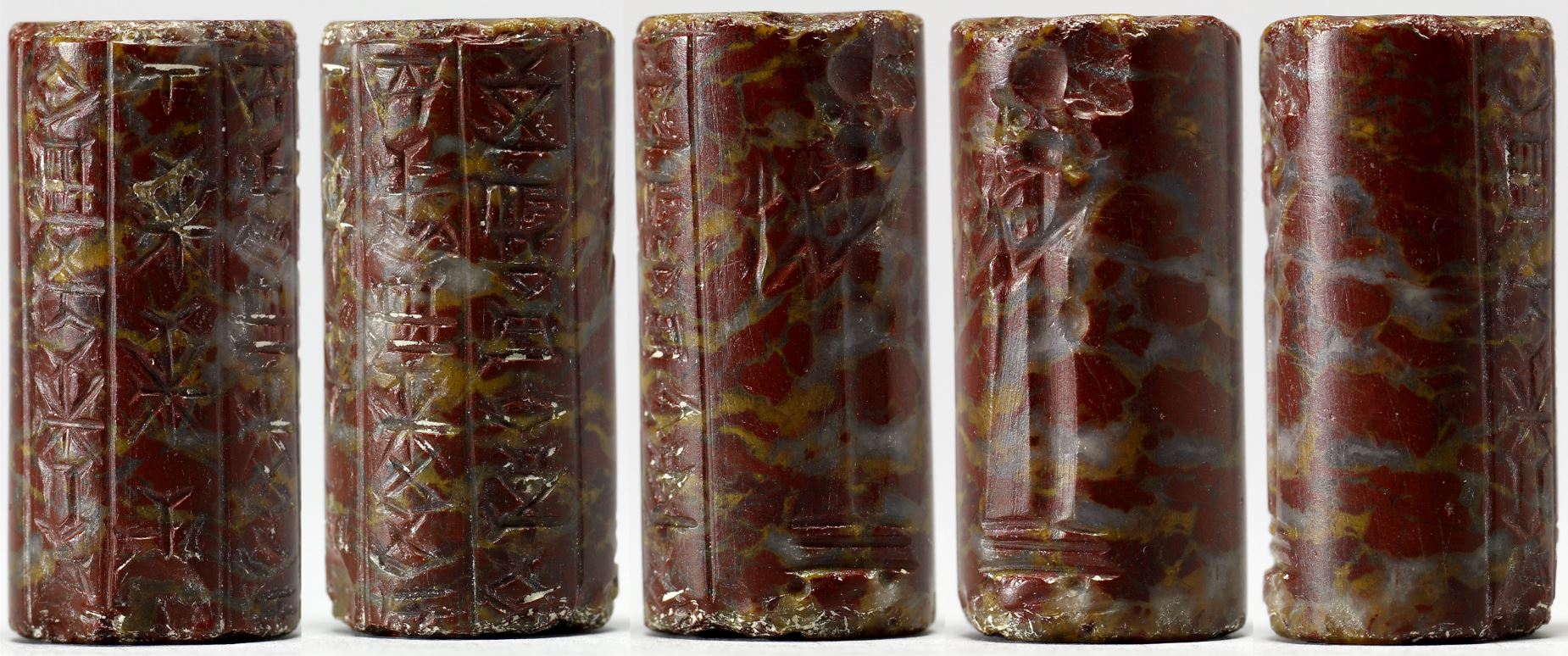Today’s tablet is a dedication to the god Haya, spouse of Nisaba, and describes him as “One who holds the holy reed (stylus), making shine the tablet of great fates”. This week though, we’re stepping away from the gods and looking at tools and other implements through a cuneiform lens.
I would hazard a guess that if you’re reading this, you have some idea of what cuneiform is. But probably worth spending a few words on what this writing system is all about. Physically, it’s wedge-shaped impressions (the word cuneiform derives from the Latin cuneus meaning wedge), usually on a clay tablet, usually using a reed as a writing implement known as a stylus.
Conceptually, it’s a form of preserving and transmitting information over distance and through time. Literally the beginning of recorded history, at least for the peoples of what is now Iraq.
As well as clay and reed, cuneiform characters could also be carved into stone, like the marble seal yesterday, stamped onto bricks like that of Hammurabi, or inscribed onto waxed boards made of ivory or wood with a bone, wood, or perhaps metal stylus. Writing on board is actually more common in representations of scribes. Clay tablets are less common in art but some do exist. In the sources we have, you can tell a stylus intended for writing on wax from a characteristic groove on the shaft. Reed styli for clay had no groove.
Only one confirmed find of styli has ever been uncovered by archaeologists, a set of 12 Old Babylonian bone styli from Tell ed-Der (ancient Sippar Amnamum). As such an everyday item, you might expect that there would be hundred or thousands of examples found, like flint arrowheads. But as the scholar Michele Camarrosano says:
“The scarcity of findings, in my opinion, should not be attributed solely to the perishable nature of reed (or wood), but also to the fact that an everyday stylus, in all likelihood, often had the appearance of a short, undecorated stick”
Wonderfully, this comes on page 62 of his prizewinning 92-page monograph, focused entirely on these “short, undecorated sticks”, in the journal, Mesopotamia. It’s quite amazing how much he finds to say about what many might consider quite boring items. Inspiring even, to those of us with 172 more days to find interesting things to say about cuneiform tablets.

